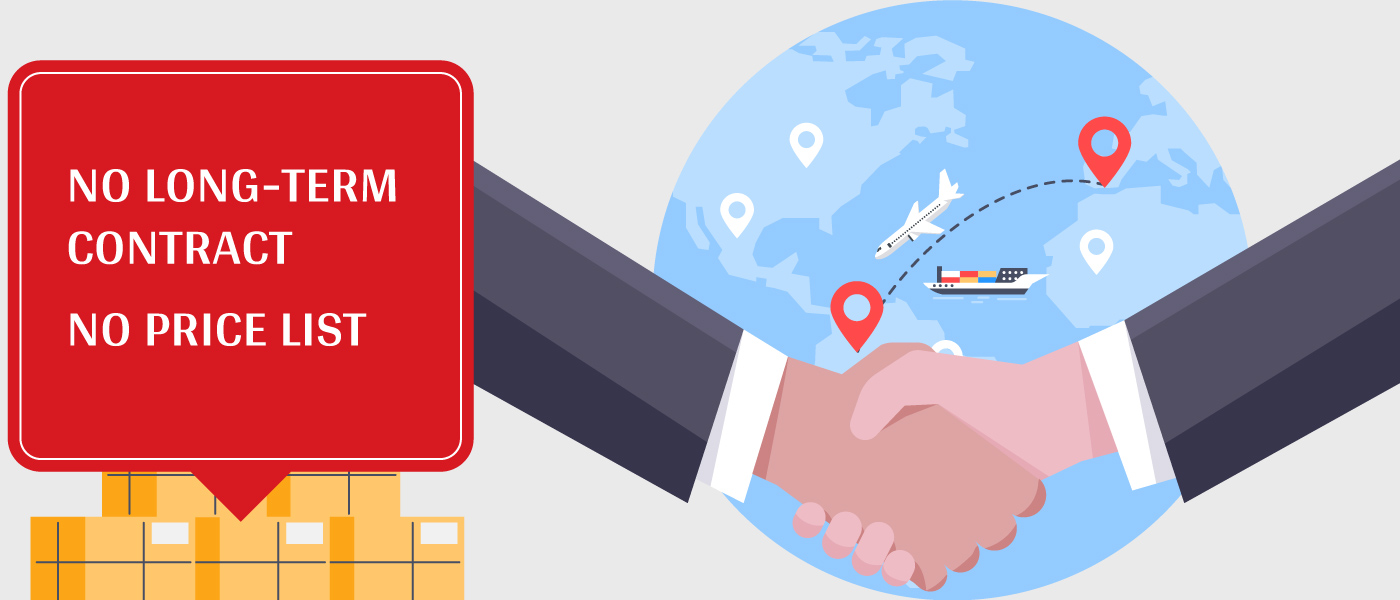Mastering Spot Freight: Key Factors and How 20Cube Optimizes Shipping Costs
- October 15, 2024
- Blog
 Managing supply chain projects is seamless when well-planned in advance covering all major aspects, including freight rates. However, impromptu shipments can be quite a challenge, especially when managing carriers and long-term contracts. This is where spot freight comes into the picture becoming a critical aspect of shipping operations. It is important to understand that spot freight accounts for approximately 15 to 20% of total freight operations in the freight ecosystem.
Managing supply chain projects is seamless when well-planned in advance covering all major aspects, including freight rates. However, impromptu shipments can be quite a challenge, especially when managing carriers and long-term contracts. This is where spot freight comes into the picture becoming a critical aspect of shipping operations. It is important to understand that spot freight accounts for approximately 15 to 20% of total freight operations in the freight ecosystem.
Let’s get started to understand spot freight, what factors influence the spot rates and how to manage them.
What’s spot freight?
Spot freight is a logistics solution that allows freight forwarders or sometimes shippers to opt for one-time shipping to move consignments. As it’s not a long-term contract, but more of an ad-hoc requirement, it does not pertain to any pre-existing rate agreement. Instead, it’s a spot freight agreement between the logistics provider and the shipper.
The spot freight rates are most commonly used for project freight, expedited shipments, spare part logistics and the moving of capital equipment. What is important to note here is that these spot rates do have an expiration date, which can be as short as a day or a few days ahead and it is finalized based on the prevailing market conditions.
Factors that influence the spot freight rates
The freight market is dynamic, and the spot rates can be subject to internal and external influences and may vary from one carrier to another.
Demand and supply dynamics
This is a major influencer for spot rates. A high demand for any specific freight mode (truck, sea, air, rail, etc.,) will lead to higher rates and vice versa.
Fuel cost
Fluctuations in fuel prices directly impact the operation cost of shippers. The higher the fuel price, the higher the spot rates.
Route and distance
Longer routes need more resources impacting spot rates, compared to shorter distances. However, if the route is remote, difficult terrain, needing special infrastructure, it can easily drive up the spot rate.
Market conditions
Peak seasons, like the holidays, increase demand and lead to higher rates. Economic growth boosts freight demand, while a declining economy reduces consumer spending and lowers spot rates.
Port congestions
The congestion at ports can cause shipment delays, and reduce the available capacity due to limited availability of space and increase in demand.
Delivery urgency
Time-sensitive deliveries are a major reason for high spot rates due to specialized routes and may cause inconvenience to carriers.
How do we manage spot freight better?
Market Awareness
At 20Cube, we continuously monitor the freight market like the prevailing conditions and the influencing factors to enable us to stay on top of the spot freight market.
Flexible and Strategic Shipping Operations
At 20Cube, we plan, strategize and schedule shipments that can assist the shippers and other stakeholders in leveraging the spot rates when the rates are low.
Flexibility & market visibility enables us to explore alternative routes that could have lower spot rates.
Negotiation
Having a tab on the prevailing market rates, economic conditions and on demand and supply can help negotiate better spot rates. At 20Cube, we tend to emphasize on all shipping aspects whether it’s a freight volume, the distance or the trade lane, before negotiating the spot rates. Strategic and good rapport with the carriers and shipping lines also help lower pricing and prioritize services with ease.
Adapting technology
20Cube’s tech platform simplifies the process of finding carriers and also provides ease in comparing rates and negotiating efficiently. These solutions help optimize freight operations by using data analytics to identify potential areas of improvement and assess carrier performance.
Summing Up
Spot freight primarily works on an adhoc basis, but if it’s not managed well, it will certainly inflate the overall freight cost. The issue is that most of the shippers don’t have visibility into their spending on spot freight. As supply chain disruption is here to stay, the spot freight rate is bound to upsurge. This is where 20Cube can help through its vast experience and the digital platform can help execute and track shipments for enhanced multi-team collaboration.



